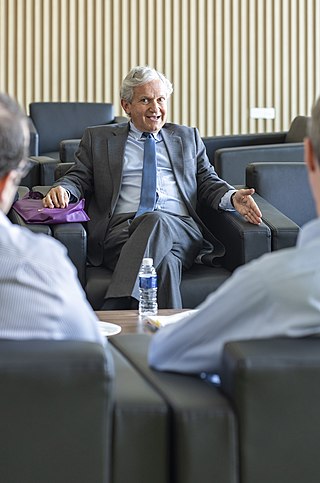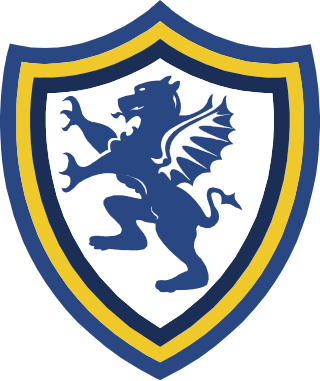Peter Stent was a seventeenth-century London printseller, who from the early 1640s until his death ran one of the biggest printmaking businesses of the day.

The Keeper or Master of the Rolls and Records of the Chancery of England, known as the Master of the Rolls, is the President of the Civil Division of the Court of Appeal of England and Wales and Head of Civil Justice. As a judge, the Master of the Rolls is second in seniority in England and Wales only to the Lord Chief Justice. The position dates from at least 1286, although it is believed that the office probably existed earlier than that.

St Piran's is a prep school located on Gringer Hill in Maidenhead, Berkshire, England. The school was known as Cordwalles School until 1919 and has been co-educational since the 1990s.

Hele's School, formerly Plympton Grammar School, is a mixed Academy school and Sixth Form in the Plympton district of Plymouth, England, 6 miles (9.7 km) east of Plymouth city centre. Until 31 March 2011, Hele’s was a community school funded by the Local Education Authority (LEA), which is Plymouth City Council. From 1 April 2011, Hele's became an Academy, which among other things gives the school financial and educational independence. The school has a voluntary Combined Cadet Force with Navy, Army and RAF sections. Cadets in the CCF are given the option to take part in the annual Ten Tors Challenge on Dartmoor.

The Department of Physics and Astronomy at the University of Manchester is one of the largest and most active physics departments in the UK, taking around 250 new undergraduates and 50 postgraduates each year, and employing more than 80 members of academic staff and over 100 research fellows and associates. The department is based on two sites: the Schuster Laboratory on Brunswick Street and the Jodrell Bank Centre for Astrophysics in Cheshire, international headquarters of the Square Kilometre Array (SKA).
Stubbington House School was founded in 1841 as a boys' preparatory school, originally located in the Hampshire village of Stubbington, around 1 mile (1.6 km) from the Solent. Stubbington House School was known by the sobriquet "the cradle of the Navy". The school was relocated to Ascot in 1962, merging with Earleywood School, and it closed in 1997.
Sir Charles Haukes Todd Crosthwaite served as Chief Commissioner of the British Crown Colony of Burma from March 1887 to December 1890.

Admiral of the Fleet Sir William Rowley KB was a Royal Navy officer. He distinguished himself by his determination as commander of the vanguard at the Battle of Toulon in February 1744 during the War of the Austrian Succession. He went on to be Commander-in-Chief of the Mediterranean Fleet in August 1744 and successfully kept the Spanish and French fleets out of the Mediterranean area but was relieved of his command following criticism of his decision as presiding officer at a court-martial.
The Archdeacon of Oxford is a senior ecclesiastical officer in the Diocese of Oxford, England. The office responsibility includes the care of clergy and church buildings within the area of the Archdeaconry of Oxford.
The Archdeacon of Gloucester is a senior ecclesiastical officer in the Diocese of Gloucester, England whose responsibilities include the care of clergy and church buildings within the area of the Archdeaconry of Gloucester.
The Archdeacon of Colchester is a senior ecclesiastical officer in the Diocese of Chelmsford – she or he has responsibilities within her archdeaconry including oversight of church buildings and some supervision, discipline and pastoral care of the clergy.
The Archdeacon of Suffolk is a senior cleric in the Diocese of St Edmundsbury and Ipswich.

Justice of the Common Pleas was a puisne judicial position within the Court of Common Pleas of England and Wales, under the Chief Justice. The Common Pleas was the primary court of common law within England and Wales, dealing with "common" pleas. It was created out of the common law jurisdiction of the Exchequer of Pleas, with splits forming during the 1190s and the division becoming formal by the beginning of the 13th century. The court became a key part of the Westminster courts, along with the Exchequer of Pleas and the Court of King's Bench, but with the Writ of Quominus and the Statute of Westminster, both tried to extend their jurisdiction into the realm of common pleas. As a result, the courts jockeyed for power. In 1828 Henry Brougham, a Member of Parliament, complained in Parliament that as long as there were three courts unevenness was inevitable, saying that "It is not in the power of the courts, even if all were monopolies and other restrictions done away, to distribute business equally, as long as suitors are left free to choose their own tribunal", and that there would always be a favourite court, which would therefore attract the best lawyers and judges and entrench its position. The outcome was the Supreme Court of Judicature Act 1873, under which all the central courts were made part of a single Supreme Court of Judicature. Eventually the government created a High Court of Justice under Lord Coleridge by an Order in Council of 16 December 1880. At this point, the Common Pleas formally ceased to exist.
The Archdeacon of Cornwall is a senior cleric in the Church of England Diocese of Truro.
The Intelligence Co-ordinator, later Security and Intelligence Co-ordinator was a senior post in the Cabinet Office of the British Civil Service that oversaw the intelligence services and their relationship to the government.

Sir Philip Magnus, 1st Baronet was a British educational reformer, rabbi, and politician, who represented the London University constituency as a Unionist Member of Parliament from 1906 to 1922. He had previously been appointed director of the City and Guilds of London Institute, from where he helped oversee the creation of a modern system of technical education in the United Kingdom. He was married to the writer and teacher Katie Magnus, and was father of the publisher Laurie Magnus. Laurie predeceased him, and on his own death in 1933 he was succeeded in the baronetcy by Laurie's eldest son Philip.

Edward Harold Spender, was a British Liberal Party politician, author, journalist and lecturer.







